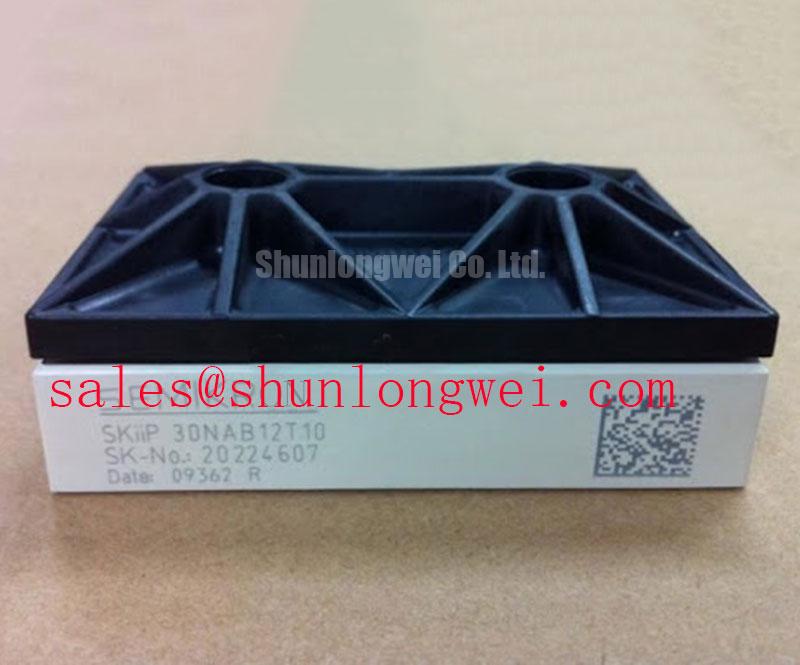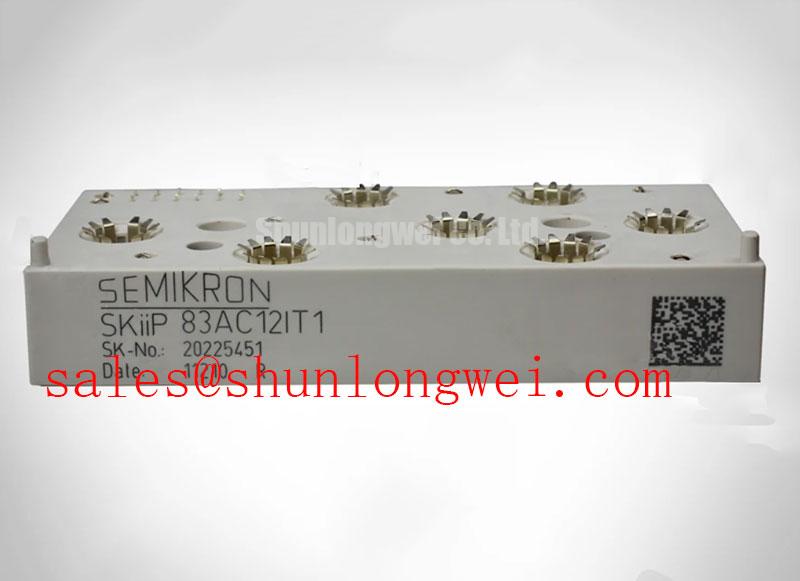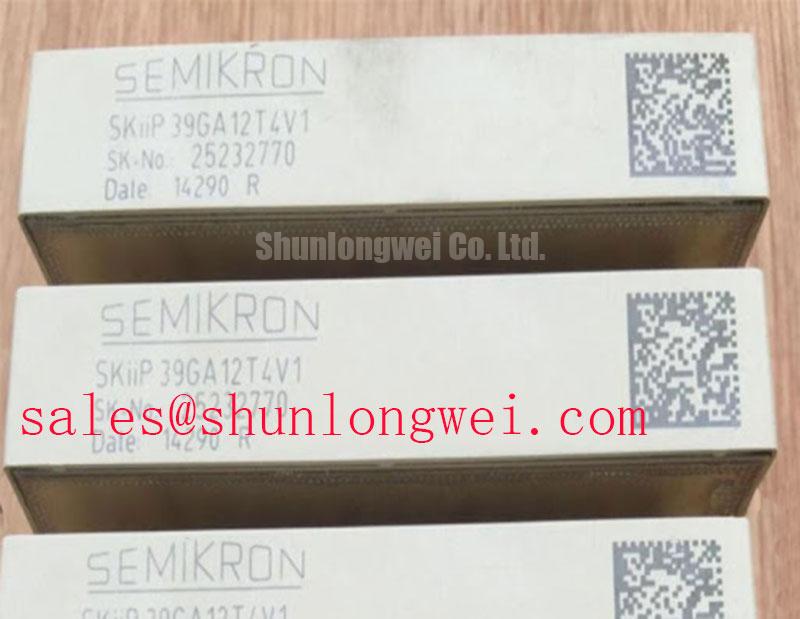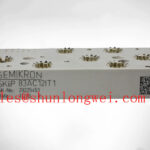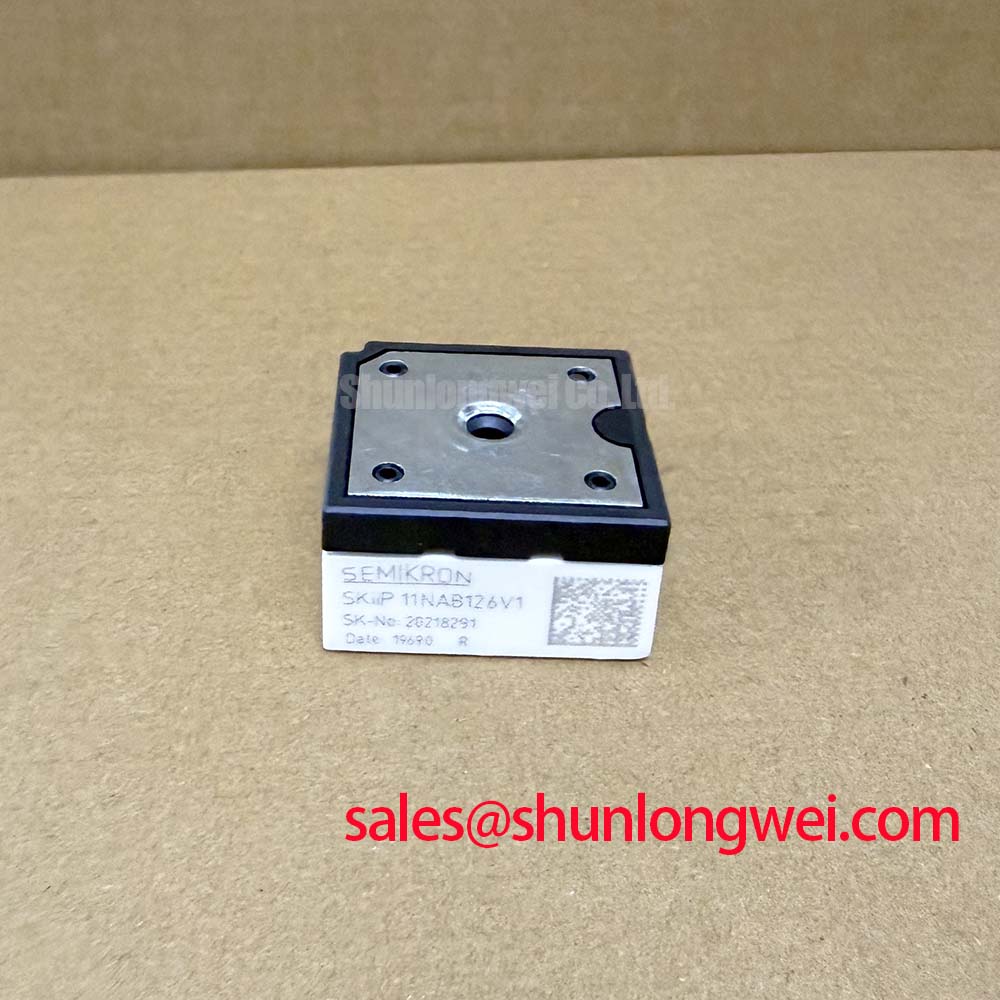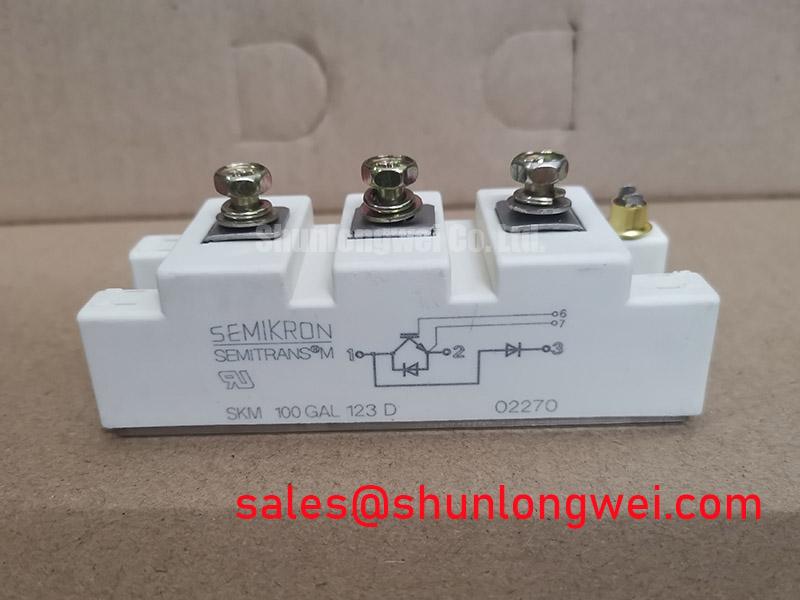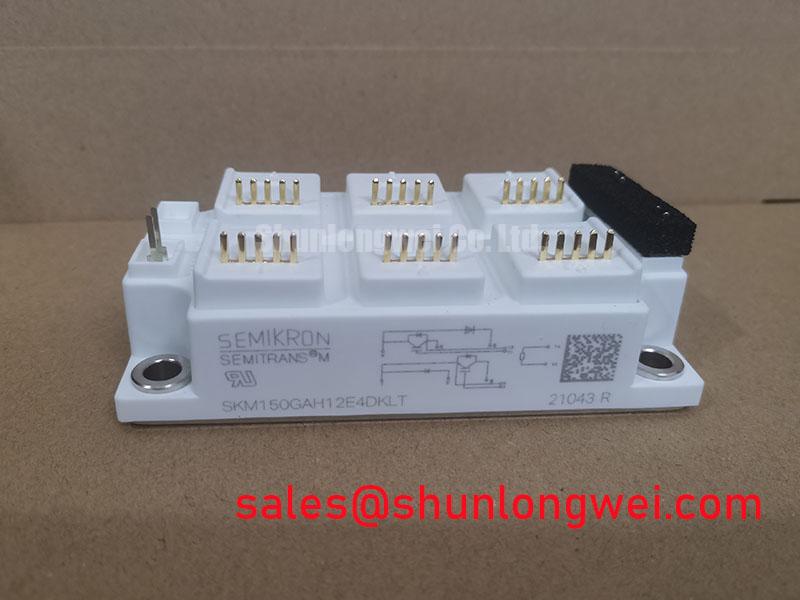Content last revised on November 14, 2025
SKiiP39GA12T4V1 IPM: Integrated 1200V Inverter Module
Technical Overview for Power System Engineers
Intelligent Power Modules (IPMs) represent a pivotal technology for accelerating the development of compact and reliable power conversion systems. By co-packaging the power switching devices with their dedicated gate drive and protection circuits, these modules offer a validated subsystem that mitigates common design challenges. The SEMIKRON SKiiP39GA12T4V1 is a prime example of this philosophy, encapsulating a complete 3-phase inverter power stage within a single, highly integrated component. This module leverages TRENCHSTOP™ IGBT4 technology to deliver robust electrical performance for demanding inverter applications.
The SKiiP39GA12T4V1 IPM streamlines power stage design by consolidating a 3-phase inverter, gate driver, and protection into a single, solder-free module. Its specifications are tailored for high-power industrial systems. How does this module simplify assembly? Its pressure contact technology eliminates all solder joints for power and auxiliary connections, ensuring a faster and more consistent mounting process, which is a key consideration for high-volume manufacturing and long-term field reliability.
- Core Specifications: 1200V | 550A (ICRM) | VCE(sat) 1.8V (typ.)
- Key Benefits: Accelerates system development. Enhances assembly reliability.
Gaining a Competitive Edge with Integrated Power Systems
In today's fast-paced industrial market, the speed of innovation is a critical differentiator. Adopting integrated power platforms like the SKiiP 3 technology allows engineering teams to shift focus from component-level circuit design to system-level innovation. The SKiiP39GA12T4V1 consolidates the complexities of gate drive design, protection logic, and thermal sensing. This pre-engineered approach not only reduces the bill of materials (BoM) and PCB footprint but also significantly curtails the R&D timeline. For companies developing a range of products, this modularity enables the creation of scalable power platforms, fostering faster deployment of new equipment and reducing the total cost of ownership across a product family.
Engineering Value in Demanding Drive Applications
The SKiiP39GA12T4V1 is engineered to provide a robust foundation for a variety of power conversion systems where reliability and power density are paramount.
- Variable Frequency Drives (VFDs): The module's integrated protection features, including VCEsat monitoring for short-circuit detection and under-voltage lockout, provide the necessary resilience for motor control applications. Its low thermal resistance facilitates efficient heat dissipation, critical for maintaining performance in enclosed industrial cabinets.
- Servo Drives: In precision motion control, the close coupling of the gate driver and IGBTs ensures clean and controlled switching, contributing to the precise torque and speed regulation required by advanced robotics and CNC machinery. For systems requiring alternative power ratings, the SKM400GAR12T4 can be evaluated as part of a broader system design analysis.
- Solar and Grid-Tie Inverters: The module’s high blocking voltage of 1200V provides a substantial safety margin for grid-connected applications. The integrated temperature sensor allows for precise thermal management, enabling the inverter to operate closer to its maximum power point without compromising long-term reliability.
For VFD designs up to 200kW requiring rapid development and high assembly yield, the SKiiP39GA12T4V1's integrated approach presents a compelling technical case.
Data Points for System Architecture Evaluation
When architecting a new power system, a key decision is the trade-off between a fully integrated IPM solution and a discrete design comprising separate IGBTs, diodes, and a gate driver board. The following data points, derived from the SKiiP39GA12T4V1's specifications, provide a factual basis for this evaluation. An IPM approach consolidates multiple procurement and assembly steps into a single component, potentially simplifying the supply chain and manufacturing process. A discrete approach, while offering more granular component selection, introduces complexities in PCB layout, gate drive optimization, and component-to-component validation that must be factored into the total project cost and timeline. A deeper understanding of these trade-offs can be found in resources discussing IPM vs. discrete IGBT designs.
A Closer Look at the Technology
The performance of the SKiiP39GA12T4V1 is founded upon several core technological pillars. What technology underpins the SKiiP39GA12T4V1? It utilizes advanced TRENCHSTOP™ IGBT4 chips for efficient power switching. This established silicon technology provides a well-balanced trade-off between conduction losses (VCE(sat)) and switching losses (Eon/Eoff), making it suitable for a wide range of industrial switching frequencies.
Integrated Driver and Protection
At the heart of the module's "intelligence" is the integrated SKHI 23/27 gate driver. This circuit is precisely matched to the IGBTs it controls, providing optimized gate current for efficient turn-on and turn-off. More importantly, it serves as the system's first line of defense, with built-in functionalities that include:
- VCEsat monitoring for rapid short-circuit detection and shutdown.
- An isolated fault signal (CAL) to inform the system controller of a trip event.
- On-board temperature and DC-link voltage monitoring outputs for real-time system feedback.
Deployment Example: Assembling the Power Stage
A practical benefit of the SKiiP39GA12T4V1 becomes evident during the manufacturing phase. In a traditional design, the assembly of a power stage involves soldering multiple discrete IGBTs and a separate driver PCB, each with numerous solder joints that are potential points of failure. With this IPM, the process is streamlined. The module is mounted directly to the heatsink. Power and control connections are then made via pressure contacts, which are secured with screws to a defined torque. This solder-free approach not only speeds up assembly time but also creates a more reliable connection that is resilient to thermal cycling and mechanical vibration, a concept central to SKiiP® Technology.
Key Parameters at a Glance
The following parameters are critical for evaluating the SKiiP39GA12T4V1 for your specific application. This selection highlights the essential electrical and thermal characteristics that define the module's operational boundaries and performance capabilities.
| Parameter | Value |
|---|---|
| Collector-Emitter Voltage (VCES) | 1200 V |
| Nominal Collector Current (ICnom) | 400 A |
| Repetitive Peak Collector Current (ICRM) | 550 A |
| Collector-Emitter Saturation Voltage (VCE(sat), Tj=125°C, IC=400A) | 1.8 V (typ.) / 2.15 V (max.) |
| Thermal Resistance, Junction to Case (Rth(j-c) per IGBT) | 0.05 K/W (max.) |
| Short Circuit Withstand Time (tpsc) | 10 µs |
Download the SKiiP39GA12T4V1 Datasheet for complete specifications and application notes.
Frequently Asked Questions
What are the main advantages of the pressure contact system in the SKiiP39GA12T4V1?
The primary advantages are enhanced reliability and simplified assembly. By eliminating solder joints, which can fatigue and crack over thousands of thermal cycles, the pressure contact system provides a more robust and durable connection. For manufacturing, it removes the time-consuming and variable process of soldering, leading to faster and more consistent production.
Does the integrated gate driver require an external power supply?
Yes, the integrated gate driver requires a dedicated, isolated power supply to function correctly. The datasheet specifies the required voltage and current for the driver's logic and power stages. This is standard practice for IPMs and ensures clean, noise-immune operation of the gate drive circuitry, separate from the main high-power DC link.
How does the module's integrated temperature sensing improve system reliability compared to an external NTC on the heatsink?
The integrated NTC temperature sensor is placed much closer to the IGBT and diode chips inside the module. This provides a more accurate and immediate reading of the semiconductor junction temperature. An external sensor on the heatsink measures the heatsink temperature, which has a significant thermal lag. By monitoring the chip temperature more directly, the system's control logic can react faster to potential over-temperature conditions, allowing for more effective power derating or shutdown to prevent device failure.
Strategic Outlook for System Design
As power electronics systems continue to demand higher power density and shorter design cycles, the role of highly integrated modules like the SKiiP39GA12T4V1 becomes increasingly strategic. By abstracting the complexities of the power stage into a single, reliable component, this IPM enables engineering teams to allocate more resources toward system-level features, software development, and overall product differentiation. Investing in such platform-based components is a forward-looking strategy that builds resilience and agility into the product development lifecycle, ensuring a faster response to evolving market demands.

